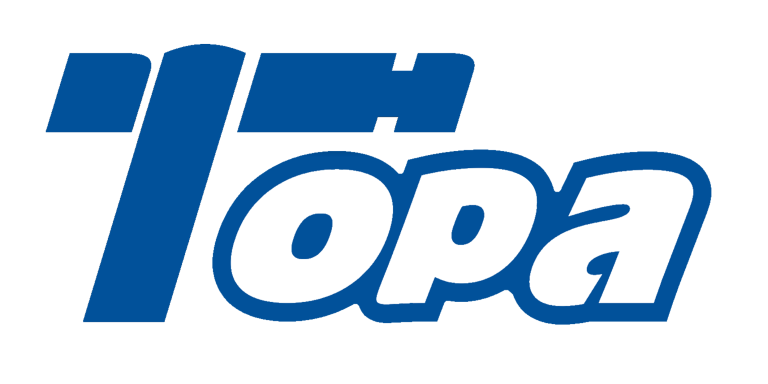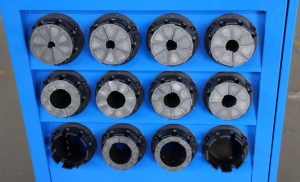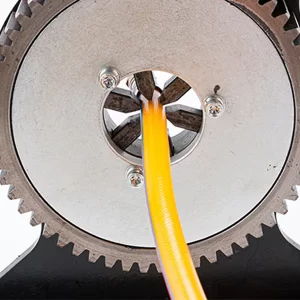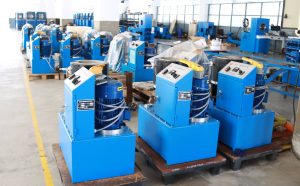Investing in a hydraulic hose crimper can significantly impact your business operations. The return on investment (ROI) of such equipment is essential for making informed purchasing decisions. In this article, we will explore the intricacies of ROI in relation to hydraulic hose crimpers. We’ll investigate the benefits, costs, calculations, and factors influencing ROI. Our goal is to provide a comprehensive understanding that empowers businesses to maximize their investment.
1. What Is the ROI of Investing in a Hydraulic Hose Crimper?
Understanding the ROI of investing in a hydraulic hose crimper begins with defining what ROI means in this context. ROI, or return on investment, helps businesses assess the profitability of their investments. A hydraulic hose crimper is a specialized tool used to create secure connections between hoses and fittings, essential for various industries including manufacturing, automotive, and construction.
The importance of measuring ROI cannot be overstated. It allows companies to evaluate whether the costs associated with a new crimper will yield sufficient returns in terms of efficiency, productivity, and cost savings. By analyzing past investments and their outcomes, businesses can make more informed decisions regarding future purchases.
Now, let’s take a closer look at how hydraulic hose crimpers function and how they benefit operations. This is where it gets interesting. Hydraulic hose crimpers streamline the process of connecting hoses, reducing the time and labor required compared to manual methods. They ensure a consistent and secure connection, which minimizes the risk of leaks and failures. These benefits can lead to increased productivity, fewer maintenance issues, and ultimately, a positive impact on the bottom line.
| Aspect | Description |
|---|---|
| Definition | ROI measures profitability of an investment. |
| Importance | Helps evaluate investment decisions. |
| Function | Crimpers securely connect hoses and fittings. |
| Benefits | Streamlined processes, reduced labor, and fewer failures. |
2. Why Should Businesses Invest in Hydraulic Hose Crimpers?
When evaluating whether to invest in hydraulic hose crimpers, businesses must consider the numerous benefits these tools provide. But here’s the kicker: the efficiency gained from using a hydraulic crimper often outweighs the initial costs associated with purchasing the equipment.
One key advantage of hydraulic hose crimpers is their ability to significantly reduce production time. For instance, a manufacturing facility that previously relied on manual crimping methods might take several minutes to crimp a single hose. With a hydraulic crimper, this process can be completed in a matter of seconds. This increased speed directly translates to enhanced productivity, allowing businesses to fulfill orders more rapidly.
Additionally, the quality of connections made with hydraulic crimpers is superior to those made manually. A consistent crimp ensures that hoses can withstand high pressures without failing. This reliability not only improves operational safety but also enhances customer satisfaction, as clients receive products that meet or exceed their expectations.
Consider this case study: a construction company invested in a hydraulic hose crimper and reported a 30% reduction in assembly time. This efficiency gain allowed them to take on more projects, boosting revenue. The investment paid for itself within months, demonstrating the potential for significant returns.
| Benefit | Impact on Business |
|---|---|
| Increased productivity | Faster production times lead to more output. |
| Improved quality | Consistent crimping reduces failures. |
| Enhanced safety | Reliable connections minimize risk. |
| Higher customer satisfaction | Better quality leads to repeat business. |
3. How Does a Hydraulic Hose Crimper Work?
Understanding how a hydraulic hose crimper works is crucial for appreciating its value. What’s the real story behind the mechanics of these devices?
A hydraulic hose crimper uses hydraulic pressure to compress metal fittings onto hoses, creating a secure bond. The process begins with selecting the appropriate fitting and hose. Once these components are in place, the crimper applies precise pressure to ensure a snug fit. This mechanism eliminates the guesswork associated with manual crimping, where inconsistencies can lead to failures.
Key components of a hydraulic crimper include the hydraulic pump, crimping dies, and the control mechanism. The hydraulic pump generates the pressure needed for crimping, while the dies shape the fitting onto the hose. The operator simply places the hose and fitting into the crimper, selects the appropriate setting, and initiates the crimping process.
This is where it gets interesting: advancements in technology have led to more sophisticated hydraulic crimpers. Many modern models feature digital displays that provide feedback on pressure settings and crimping status. This added functionality enhances precision and reduces the likelihood of operator error.
| Component | Function |
|---|---|
| Hydraulic Pump | Generates pressure for crimping. |
| Crimping Dies | Shapes the fitting onto the hose. |
| Control Mechanism | Allows for precise settings and operation feedback. |
| Digital Displays | Enhances precision and reduces errors. |
4. What Are the Costs Associated with Hydraulic Hose Crimpers?
When considering the purchase of a hydraulic hose crimper, businesses must evaluate the full spectrum of costs involved. It can be a daunting task, but understanding these expenses is essential for making informed decisions.
The initial purchase cost of hydraulic hose crimpers can vary widely based on brand, model, and capabilities. Entry-level models may be available for a few hundred dollars, while high-end industrial-grade crimpers can cost several thousand. This investment must be weighed against the anticipated benefits, including productivity gains and cost savings over time.
Operational expenses also play a crucial role in the overall cost assessment. Maintenance is a key consideration; regular upkeep ensures the longevity and efficiency of the equipment. Businesses should budget for routine inspections and necessary repairs. Training staff to properly operate and maintain the crimper is another essential cost to factor in. This investment in training can prevent costly mistakes and extend the lifespan of the equipment.
Furthermore, businesses should consider the indirect costs associated with downtime. If a crimper fails and requires repairs, production may halt, leading to lost revenue. By understanding both direct and indirect costs, companies can create a more accurate picture of the total investment required for a hydraulic hose crimper.
| Cost Type | Description |
|---|---|
| Initial Purchase Cost | Varies based on model and brand. |
| Operational Expenses | Includes maintenance and repair costs. |
| Training Costs | Investing in staff training is essential for efficiency. |
| Indirect Costs | Lost revenue due to downtime can impact overall ROI. |
5. How Can You Calculate the ROI of a Hydraulic Hose Crimper?
Calculating the ROI of a hydraulic hose crimper involves several steps, and it’s vital to understand this process thoroughly. Ready for the good part? Let’s break it down.
The formula for calculating ROI is relatively straightforward:
ROI=Net ProfitCost of Investment×100ROI=Cost of InvestmentNet Profit×100
Net profit is determined by subtracting the total costs associated with the investment from the total revenue generated as a result of using the crimper. This means that businesses must track their expenses, including purchase costs, maintenance, and training, alongside the revenue generated from increased productivity or improved product quality.
To illustrate, consider a business that invests $5,000 in a hydraulic hose crimper. If the enhanced efficiency leads to an additional $10,000 in revenue over a year, the net profit would be $5,000. Plugging these numbers into the formula yields:
ROI=5,0005,000×100=100%ROI=5,0005,000×100=100%
This example showcases how businesses can achieve a positive return on their investment. Factors such as savings from reduced labor costs or decreased material waste should also be included in the calculations to provide a comprehensive view of ROI.
| Calculation Component | Description |
|---|---|
| Initial Investment | Total cost of purchasing the crimper. |
| Revenue from Efficiency | Additional revenue generated due to increased productivity. |
| Net Profit | Revenue minus total costs associated with the investment. |
| ROI | Net profit divided by cost of investment, expressed as a percentage. |
6. What Factors Influence the ROI of Hydraulic Hose Crimpers?
Several factors can significantly influence the ROI of hydraulic hose crimpers. Understanding these elements is crucial for maximizing your investment. What influences ROI? Let’s explore.
The quality of the crimper plays a pivotal role. High-quality crimpers designed for industrial use tend to offer better performance and longevity, which translates to a higher ROI. When purchasing, businesses should consider investing in reputable brands that provide reliable equipment.
The volume of production also impacts ROI. Companies that use hydraulic hose crimpers extensively will see a more significant return compared to those with lower usage rates. For example, a manufacturing facility producing thousands of hoses each month will benefit more from the speed and efficiency of a hydraulic crimper than a small workshop that produces only a few dozen.
Labor costs are another critical factor. If a hydraulic hose crimper reduces the need for manual labor, the savings can significantly enhance ROI. Moreover, if skilled operators can use the crimper to produce more in less time, the business can allocate resources more efficiently, leading to further cost reductions.
This is where it gets interesting: the market demand for high-quality hoses can influence ROI as well. In industries where safety and reliability are paramount, investing in a hydraulic hose crimper to ensure consistent quality can lead to a competitive advantage and greater customer satisfaction.
| Factor | Impact on ROI |
|---|---|
| Quality of Crimper | Higher quality leads to better performance and longevity. |
| Volume of Production | More usage results in greater ROI. |
| Labor Costs | Reduced labor needs improve overall cost efficiency. |
| Market Demand | Higher demand for quality can enhance ROI. |
7. How to Choose the Right Hydraulic Hose Crimper for Your Business?
Choosing the right hydraulic hose crimper is crucial for ensuring optimal performance and ROI. But here’s the kicker: with so many options available, how do you make the best choice?
First, consider the specifications of the crimper. Different models come with varying capacities, so it’s essential to select one that meets your production needs. For instance, if you routinely work with larger hoses, ensure the crimper can accommodate that size.
Next, evaluate the features offered by different crimpers. Some models include digital controls, which can enhance precision and user-friendliness. Features such as automatic shut-off, pressure monitoring, and compatibility with various fittings can also add value to your investment.
Brand reputation matters too. Opt for manufacturers known for their reliability and customer support. Reading reviews and seeking recommendations from industry peers can guide you toward trusted brands.
Additionally, consider the cost of ownership. While a lower-priced crimper may seem appealing, higher-quality models often prove more cost-effective in the long run due to their durability and efficiency. Investing slightly more upfront can save money on repairs and replacements later.
| Criteria | Considerations |
|---|---|
| Specifications | Ensure the crimper meets your hose size and capacity. |
| Features | Look for digital controls and user-friendly options. |
| Brand Reputation | Choose manufacturers known for reliability. |
| Cost of Ownership | Consider long-term savings versus initial costs. |
8. What Are the Common Mistakes to Avoid When Investing?
Investing in a hydraulic hose crimper can be a significant decision for businesses, but there are common pitfalls to avoid. What should you watch out for?
One major mistake is opting for the cheapest option without considering quality. While budget constraints are understandable, investing in a low-quality crimper can lead to frequent breakdowns and costly repairs. Instead, prioritize quality and long-term value over the initial purchase price.
Another common error involves neglecting proper training for staff. Without proper training, operators may not fully utilize the crimper’s capabilities, leading to inefficiencies and errors. Investing in training programs can enhance productivity and ensure that staff members operate the equipment safely and effectively.
Failing to calculate the ROI accurately is another mistake that can have serious consequences. Businesses should take the time to evaluate all costs associated with the crimper, including maintenance and labor, while also considering the potential revenue increases. This comprehensive approach will provide a clearer picture of the investment’s value.
Lastly, overlooking maintenance needs can result in unexpected downtime and repair costs. Regular inspections and servicing are essential to keep the crimper operating at peak performance. Businesses should establish a maintenance schedule to ensure longevity and efficiency.
| Mistake | Impact |
|---|---|
| Choosing the cheapest option | Leads to frequent breakdowns and repairs. |
| Neglecting staff training | Results in inefficiencies and errors. |
| Failing to calculate ROI | Misleading assessments of investment value. |
| Overlooking maintenance | Causes unexpected downtime and repair costs. |
9. How Does Investing in a Hydraulic Hose Crimper Improve Efficiency?
The efficiency gained from investing in a hydraulic hose crimper can be transformative for businesses. Ready for the good part? Let’s explore how these tools enhance operational effectiveness.
One significant way hydraulic hose crimpers improve efficiency is through speed. As mentioned previously, the time required to crimp hoses manually can be substantial. By utilizing a hydraulic crimper, this process is vastly accelerated. For example, a company that previously took 10 minutes to crimp a hose can reduce that time to just 30 seconds with a hydraulic crimper. This increase in speed allows businesses to complete more work in less time, boosting overall productivity.
Additionally, hydraulic hose crimpers minimize errors associated with manual crimping. Inconsistencies in crimp quality can lead to product failures and costly recalls. With a hydraulic crimper, the precision of the crimp is ensured, reducing the likelihood of defects. This reliability not only enhances customer satisfaction but also strengthens the company’s reputation in the marketplace.
Moreover, the ergonomic design of many hydraulic crimpers contributes to improved efficiency. Operators can work comfortably without the strain associated with manual crimping. This leads to better focus and reduced fatigue, further enhancing productivity.
| Efficiency Aspect | Benefits |
|---|---|
| Speed | Reduced crimping time increases output. |
| Error Reduction | Consistent quality minimizes defects and recalls. |
| Ergonomic Design | Enhances operator comfort and focus. |
10. What Alternatives Exist to Hydraulic Hose Crimpers?
While hydraulic hose crimpers offer numerous benefits, businesses should also consider alternatives. What options are available, and when might they be appropriate?
Manual crimpers are one alternative. These tools require more physical effort and can be time-consuming, but they are often less expensive upfront. For small-scale operations or those with limited budgets, manual crimpers may be sufficient. However, it’s important to note that they can compromise consistency and quality compared to hydraulic models.
Another option is pneumatic crimpers, which utilize compressed air instead of hydraulic pressure. Pneumatic crimpers can be faster than manual options but may not provide the same level of precision as hydraulic crimpers. They can be suitable for high-volume applications where speed is a priority.
Additionally, some businesses may consider outsourcing their crimping needs. While this eliminates the need for capital investment in equipment, it can lead to higher long-term costs and less control over quality and production timelines.
Choosing the right solution depends on various factors, including production volume, budget, and quality requirements.
| Alternative | Pros | Cons |
|---|---|---|
| Manual Crimpers | Lower cost, simple operation. | Time-consuming, inconsistent quality. |
| Pneumatic Crimpers | Faster than manual, suitable for high volumes. | May lack precision compared to hydraulic. |
| Outsourcing | No equipment costs, flexibility. | Higher long-term costs, less control over quality. |
11. What Are the Maintenance Requirements for Hydraulic Hose Crimpers?
To ensure optimal performance and longevity, proper maintenance of hydraulic hose crimpers is essential. What maintenance tasks should businesses prioritize?
Routine maintenance tasks include regular inspections of the crimper’s components. Operators should check for signs of wear or damage, particularly in the hydraulic hoses and fittings. Early detection of issues can prevent costly repairs and downtime.
Cleaning the crimper is another critical aspect of maintenance. Dust and debris can accumulate, affecting the performance of the machine. Keeping the equipment clean helps maintain its efficiency and prolongs its lifespan.
Additionally, businesses should follow the manufacturer’s guidelines for servicing. This often includes replacing hydraulic fluids, lubricating moving parts, and ensuring all connections are secure. Scheduling these tasks regularly can prevent unexpected breakdowns and maintain consistent performance.
Training staff on proper maintenance procedures is equally important. Ensuring that operators understand how to care for the equipment can lead to improved reliability and efficiency.
| Maintenance Task | Importance |
|---|---|
| Regular Inspections | Detects wear and damage early. |
| Cleaning | Prevents dust accumulation affecting performance. |
| Following Manufacturer Guidelines | Ensures proper servicing and longevity. |
| Staff Training | Empowers operators to maintain equipment effectively. |
12. How Do Industry Trends Affect the ROI of Hydraulic Hose Crimpers?
Industry trends play a significant role in shaping the ROI of hydraulic hose crimpers. What emerging trends should businesses be aware of?
One trend is the increasing emphasis on automation and technology. Modern hydraulic crimpers often come equipped with advanced features such as digital displays and automated controls. These innovations can enhance precision and reduce operator error, leading to improved ROI.
Another trend is the growing focus on sustainability. As businesses seek to minimize their environmental impact, investing in efficient equipment is becoming more critical. Hydraulic hose crimpers that reduce material waste and energy consumption can enhance a company’s reputation and appeal to eco-conscious customers.
Additionally, the demand for high-quality, durable hoses is rising across various industries. Companies that invest in reliable hydraulic crimpers are better positioned to meet these demands, resulting in increased customer loyalty and repeat business.
Monitoring these industry trends can help businesses make informed decisions regarding their investments in hydraulic hose crimpers, ultimately leading to better ROI.
| Trend | Impact on ROI |
|---|---|
| Automation and Technology | Enhances precision and reduces errors. |
| Sustainability | Increases appeal to eco-conscious customers. |
| Demand for Quality | Positions companies for increased customer loyalty. |
13. What Are Real-World Examples of ROI from Hydraulic Hose Crimpers?
Examining real-world examples can provide valuable insights into the ROI of hydraulic hose crimpers. Let’s take a look at a few case studies that illustrate the benefits of investing in this equipment.
In one case, a manufacturing plant implemented hydraulic hose crimpers to replace manual methods. Within six months, they reported a 50% increase in production capacity. The ROI calculation revealed that the investment paid for itself in under a year, largely due to reduced labor costs and improved efficiency.
Another company, focused on automotive repairs, integrated hydraulic crimpers into their workflow. They experienced a significant reduction in errors, leading to fewer reworks and customer complaints. This improvement enhanced their reputation and resulted in increased business referrals, ultimately boosting their bottom line.
Lastly, a construction business invested in hydraulic crimpers to streamline their hose assembly process. They found that the time saved allowed them to complete projects ahead of schedule, leading to higher profitability. The positive ROI was evident in both financial metrics and enhanced customer satisfaction.
These examples highlight the tangible benefits that hydraulic hose crimpers can bring to various industries, reinforcing the importance of this investment.
| Case Study | Outcome |
|---|---|
| Manufacturing Plant | 50% increase in production capacity. |
| Automotive Repairs | Reduced errors, fewer customer complaints. |
| Construction Business | Completed projects ahead of schedule, higher profitability. |
14. How to Train Staff on Using Hydraulic Hose Crimpers?
Training staff on the proper use of hydraulic hose crimpers is essential for maximizing ROI. What steps should businesses take to ensure effective training?
First, businesses should develop a comprehensive training program that covers both the technical aspects of operating the crimper and safety protocols. This training should be tailored to the specific model being used, as different crimpers may have unique features and requirements.
Hands-on training is particularly valuable. Allowing staff to practice with the equipment under the guidance of an experienced operator can help them gain confidence and proficiency. Furthermore, training sessions should include troubleshooting tips to help staff address common issues that may arise during operation.
Regular refresher courses can also be beneficial. As technology evolves, staying updated on the latest features and techniques can enhance operational efficiency. Encouraging an environment of continuous learning helps ensure that staff remain skilled and knowledgeable.
Lastly, businesses should utilize resources such as manufacturer manuals and online tutorials to supplement training. These materials can provide additional insights and reinforce best practices.
| Training Component | Importance |
|---|---|
| Comprehensive Program | Covers technical and safety aspects. |
| Hands-on Training | Builds confidence and proficiency. |
| Troubleshooting Tips | Helps staff address common issues effectively. |
| Continuous Learning | Keeps staff updated on new technologies and techniques. |
15. What Are the Future Prospects for Hydraulic Hose Crimpers?
The future prospects for hydraulic hose crimpers are promising, reflecting industry advancements and evolving market needs. What can we expect in the coming years?
One notable trend is the integration of smart technology into hydraulic crimpers. This includes features such as IoT connectivity, allowing for real-time monitoring and diagnostics. Such innovations will enable businesses to track performance metrics and receive alerts for maintenance needs, further enhancing operational efficiency.
Sustainability will also play a significant role in shaping future developments. As industries increasingly prioritize eco-friendly practices, manufacturers will likely focus on creating crimpers that minimize waste and energy consumption. This shift will appeal to environmentally conscious customers and contribute to a positive brand image.
Moreover, the demand for customized solutions is on the rise. Businesses are seeking equipment that can accommodate specific needs and applications. Manufacturers will need to adapt their offerings to provide tailored solutions that meet diverse customer requirements.
In summary, the future of hydraulic hose crimpers looks bright, with advancements in technology and a focus on sustainability shaping the landscape. Businesses that stay informed and adaptable will be well-positioned to thrive in this evolving market.
| Future Prospect | Impact on the Industry |
|---|---|
| Smart Technology | Real-time monitoring and diagnostics enhance efficiency. |
| Sustainability | Eco-friendly practices will attract customers. |
| Customized Solutions | Meeting diverse needs will drive competitive advantage. |
FAQ Section
Q1: What is a hydraulic hose crimper?
A hydraulic hose crimper is a tool used to securely connect hoses and fittings by compressing them, ensuring a leak-proof and durable bond.
Q2: How does a hydraulic hose crimper work?
A hydraulic hose crimper uses hydraulic pressure to crimp metal fittings onto hoses, providing a secure connection that can withstand high pressures.
Q3: What should I consider when purchasing a hydraulic hose crimper?
Consider specifications such as capacity, features, brand reputation, and the overall cost of ownership, including maintenance and training.
Q4: How can I maximize the ROI of my hydraulic hose crimper?
Maximize ROI by ensuring proper maintenance, investing in staff training, and selecting a high-quality crimper that meets your production needs.
Q5: Are there alternatives to hydraulic hose crimpers?
Yes, alternatives include manual crimpers and pneumatic crimpers, but each has its trade-offs in terms of speed, quality, and cost.
This comprehensive exploration of the ROI of investing in hydraulic hose crimpers provides valuable insights and practical guidance for businesses looking to enhance their operations and profitability. By understanding the benefits, costs, and best practices associated with these tools, companies can make informed decisions that lead to successful investments.




